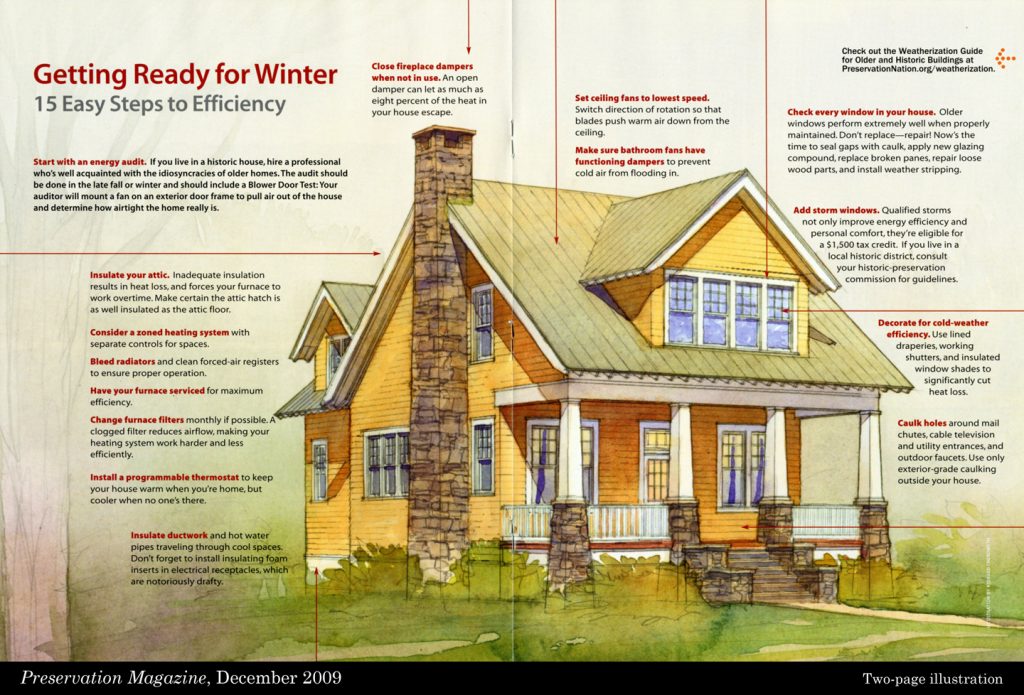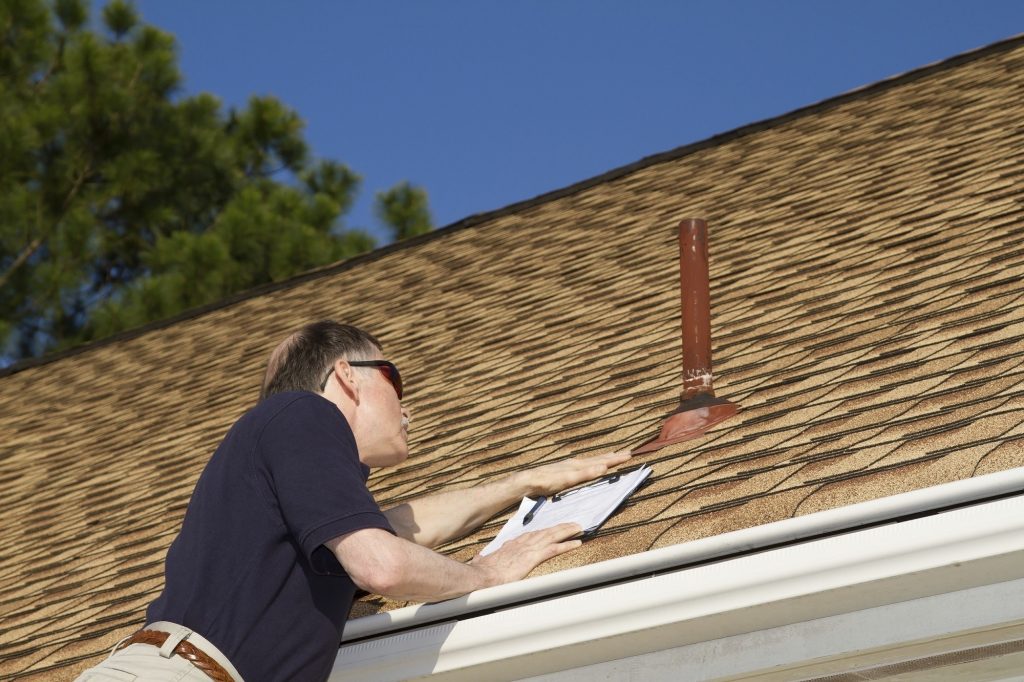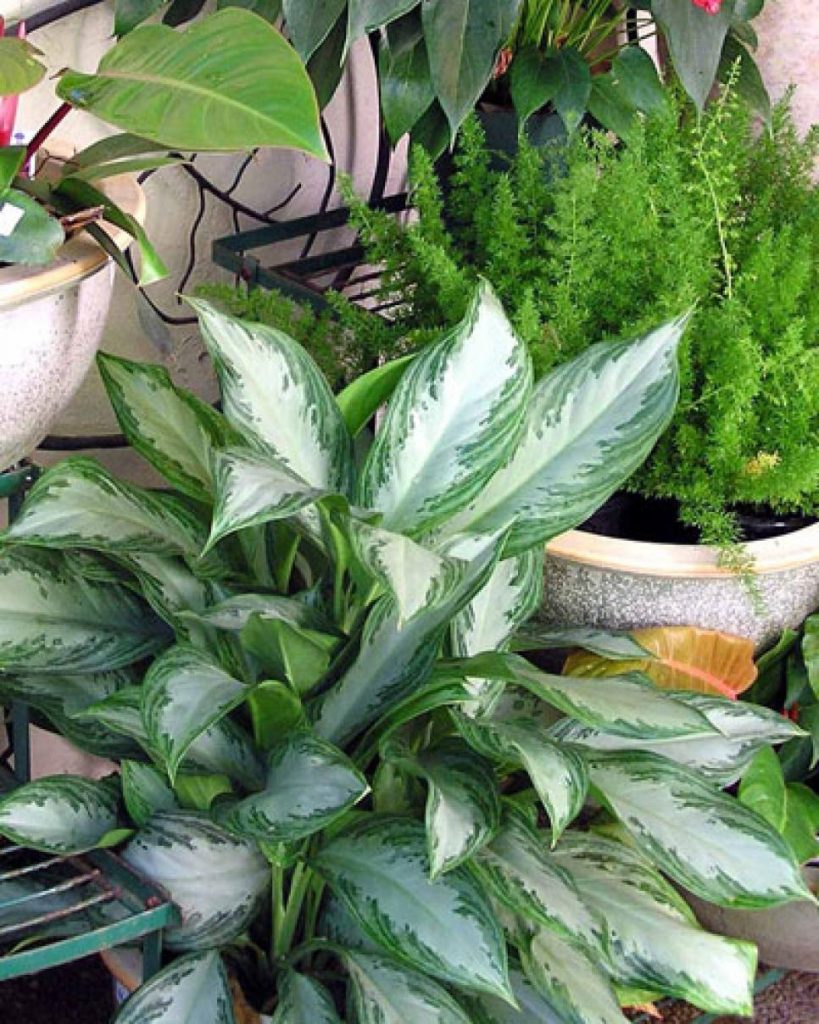How to Protect Your Home and Family from Winter Weather Challenges in All 50 States
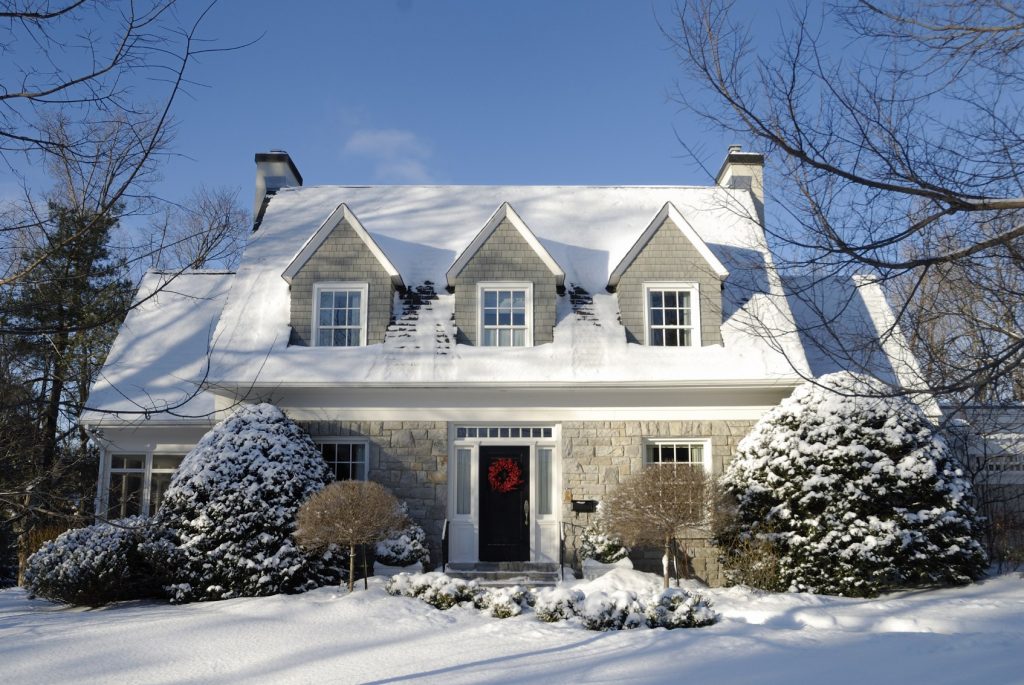
From Florida to Great Lakes, recent freezing temperatures have impacted east coast and mid-west with unprecedented cold grip. In many regions, even an unexpected dip of the thermometer to the mid-40’s or 50’s can wreak havoc on unprepared homeowners.
No matter how moderate the climate, Mother Nature has always been full of surprises. The anticipation of and preparation for cold weather can be a relatively inexpensive and simple process.
Ignoring the possibility of unseasonably cold weather can result in unpleasant and expensive surprises like burst pipes, water damage, and ice dams.
Note: Portions of this guide are standard operating procedure for folks who live in Buffalo, Minneapolis, and even Atlanta and Memphis. But inevitably, there are just as many homeowners in Houston, Las Vegas, and even Miami who can get caught unprepared.
In any case, we’ve endeavored to address topics of value in all regions of the nation, as well as some considerations that are usually overlooked in other resources.
This guide also covers subjects other than those which common-sense and worst-case scenarios dictate — cleaning your gutters, stocking up on non-perishable groceries, water, batteries, and supplies – to include sufficient rock salt to keep walkways free of icy buildup.
Pro Tip: In addition to portable chargers for autos, computers, and cell phones, make sure that you have portable light sources and plenty of batteries to power them. If you have a generator, make sure that you have an adequate supply of gasoline & oil, which can also provide back up for vehicles.
The options are clear: Spend a few dollars and hours to plan ahead for 4 months of lower temperatures. Or wait ‘til the last minute and try to find the commodities or service companies that are still available or affordable. Once the weather warms up, you’ll still be living with the outcome. Indefinitely, or for at least the next 8 months.
- Low cost and no cost resources
No matter what your budget may be, whether you can afford any budget or not, “free advice” can, often, be worth a lot more than what you pay for.
Certified plumbers, roofers, HVAC contractors, insulation dealers and other specialists within the construction industry routinely offer “free” surveys, inspections or provide such at a nominal cost.
Depending upon many variables such as the size, age, condition, and location of the home, among others … e.g., evaluations and information from reputable sources can range from $0.00 – $250.00 in Houston, TX, up to twice as much in New York City for a 20-year-old, 2,000 – 2,200 sq.ft. home.
Obviously, contractors are usually going to try and sell you something. The burden of judgment and credibility falls on the consumer. But a bit of common sense and follow-through with a few local references can assure that the following issues are legit, those not mentioned should be considered and whether the cost / benefit ratio of hiring an expert versus beginning a DIY project, makes “dollars and sense”.
There are innumerable “review” forums, web sites and other organizations (such as the BBB) that are focused on income, rather than credible information. Any uninformed or unreasonable consumer has a license to rant.
Talk directly to the companies and to their previous, local, clientele. ignore the nonsense published on the internet or touted in TV commercials. Trust your own judgment, rather than anonymous strangers’ commentary.
- Roofing system
The obvious physical risks aside, evaluating a home’s roof can be one of the most challenging winter preparations for the lay homeowner.
Potential problems presented by a change in the weather are not always visible to the untrained eye.
The added weight of snowfalls, the contraction of materials due to the lower temperatures, can exacerbate any drying, cracking or gaps that otherwise appear to be negligible. Again, the folks who offer such services at no, or little, charge have an incentive to find (exaggerate?) any defects.
Obtaining a 2nd or 3rd opinion will often reveal a consensus or contradictions among the professionals, but you will have more information and insight than from “checking” that all the shingles appear to be intact.
There are too many variables – from climate to materials to regular preventive maintenance – in estimating the life expectancy of a roof.
Among a number of contractors, manufacturers and trade associations surveyed, realistic averages for the 2 most common residential materials are:
- Asphalt shingles. Whether your roofing shingles are rated as “20 years”, “25 years” or “30 years”, major repairs or complete replacement may be needed in 75% – 80% of the above referenced timeframes. Using a “typical”, 2,000 s.f. home, the expense of complete replacement would be between $9,500 and $19,500.
- Metal roofs are initially, more expensive, these systems, though, can last up to 50 years with proper maintenance. However, upfront installation costs can range from $19,000 to $35,000.
In either case, a new roof is one of the few home improvements that can hold its value at completion, may even add ~ 5% value initially if you don’t overpay for a new roof. — Obviously, this applies to existing roofs that are in poor condition or are soon to be. That said, replacing a roof in sound condition, halfway through its life expectancy does not make “dollars and sense”.
Ignoring inflation or higher prices in the future, let’s assume a properly maintained “25 year” roof should last for 20 years. At $12,500 for a new installation, neglect can “cost” $375 per year.
For example, replacement after only 16 years is a waste of 4 x $625 = $2,500! For more expensive original materials, increased replacement costs will be proportionate. — Weigh this against the routine expense of simple remedies such as:
-
- Roof moss removal. Materials – $25 of household cleaning products. Labor – $200 to $400
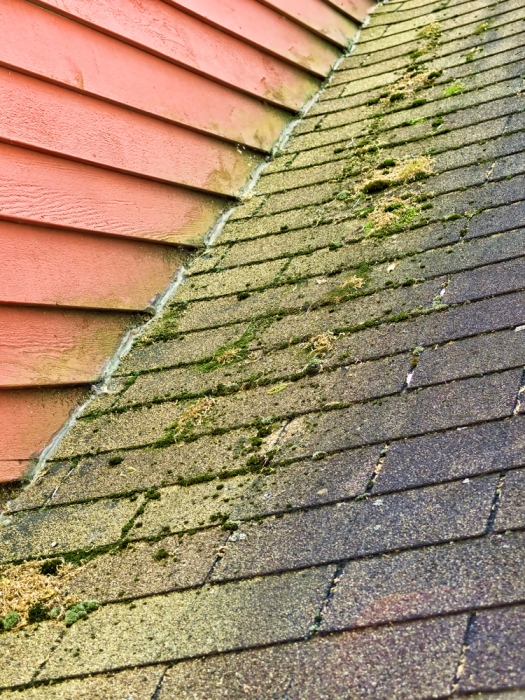
- Cracked, damaged, or missing shingles $500 – $1,200 per 100 s.f. installed.
- Roof ventilation & insulation. As the exterior roof protects the home’s interior, so should the underside of the roof be protected from the interior. Attic ceilings should be well-ventilated and insulated in order to protect the integrity of the system by minimizing differentials in temperature and humidity. One sq.ft. of ventilation will service approximately 150 s.f. of surface area.– Arbitrarily factoring pitched and gabled roofs, let’s assume a 3,000 s.f. roof. Ensuring soffit vents and ridge vents are doing their job, would be a onetime expense of $300 – $1,500, depending on the current state.
— The value accumulates over the course of each year. The costs would be recouped over time by not having to deal with preventable damage to shingles — something that could easily ensue due to poorly vented attic space — no premature shingle cracks, no melted asphalt sticking to the roof deck, and no ice dams — meaning you will have a longer a longer-lasting roof.
- Ice dams — As mentioned earlier, proper insulation and ventilation are the best way to prevent the snow on your roof top from melting and becoming an ice dam with unsightly icicles that impede drainage of water and can damage your gutters.– A simple, temporary fix method of dealing with occasional, incidental ice dam build up is by using a nylon stocking or fine mesh fabric filled with calcium chloride. As needed, place them wherever buildup occurs. DIY costs – Less than $50-$150.
Two warnings here: The freeze-retardant and saturated melt may damage plants immediately below. Cover vegetation with plastic.
If you live in an area where freezes are rare, you may want to remove the stockings from your gutters and rooftop afterwards. Otherwise, the neighbors may begin to gossip about your wild parties.
- Chimneys
Chimneys and fireplaces obviously present a greater threat of catastrophe to the structure and your family than the inconvenience of a frozen pipe or higher-than-necessary heating bill.
A thorough inspection may cost $250 – $450 (or a bit more), but taking an amateur approach upon yourself is, “playing with fire”.
In either event the condition of both the exterior and interior will include a checklist of numerous points.
Quantifying “recouped” value is simply a matter of comparing the expense of having your house burn down … along with all the possessions, people and pets that may be inside.
Outside Checks:
- Confirm that there is a chimney cap, in good repair, clean and properly installed. This will prevent snow, debris or obstructions to proper ventilation.
- Remove any tree limbs above or near the chimney.
- Assure that all mortar and bricks are in excellent condition and that the chimney crown is at least 2 feet above the roofline. Ideally, the crown should also be beveled, in order to enhance airflow. The flue liner should be visible.
- The chimney must be perpendicular to the horizontal axis (not leaning) and the roof’s flashing must be free of any gaps around the chimney.
Inside Checks:
- Use a quality flashlight that provides high illumination. Check the flu damper, making sure that it is clean and opens, closes and seals properly.
- Turn off the flashlight and open the damper. Looking upward, you should see daylight throughout the entirety of the ventilation shaft. If not, turn the flashlight back on and remove any obstructions.
- Carefully inspect the hearth, surround and the entirety of the firebox to assure that there is absolutely NO damage or deterioration. Signs of moisture may indicate a faulty cap.Also, check for obvious signs of moisture inside the firebox, which could mean a faulty cap.
Gas fireplaces:
- Inspect glass doors, latches and screens.
- Position logs securely and as designed.
- With the gas turned off, test the igniter.
- Turn the gas back on, light the fireplace and look for clogged burners. Clean with a pin or needle as needed.
These fundamental tips are not all-inclusive but will allow some understanding of what a professional inspector or repair technician should be addressing. — This is one area of home maintenance or winterizing where “saving money” as a DIY project is not recommended. An expert can perform all routine services for $250 – $450.
- HVAC
Realistically, there are only a few basics that the average person can address in preparing heating, ventilation, and air conditioning systems for winter.
Outside units, especially heat pumps, can be hosed off and kept free of animal hair, lawn clippings and debris. — Obviously, this should only be done during times that will allow for adequate drying / evaporation so that the water won’t be exposed to freezing temperatures.
Otherwise, visually check all exposed ductwork to assure that there are no leaks or damage.
Clean filters, vents and registers are just as important throughout the cold weather as during the peak of summer temperatures. As well, check all thermostats to assure that all functions are in sound working order.
Repair or replace any insulation around line sets or other piping that may have dried or aged.
At a cost of $250 – $450 in most parts of the country, the cost of a technician’s preventative inspection will include all components such as wiring, switches and routine service.
For another $150 – $250, many contractors will offer semi-annual prep visits in advance of both summer and winter.
The potential savings in energy (contact your local provider for specifics) and the convenience factor can be well-worth the price and recoup the investment by 250% over the course of a year.
- Piping
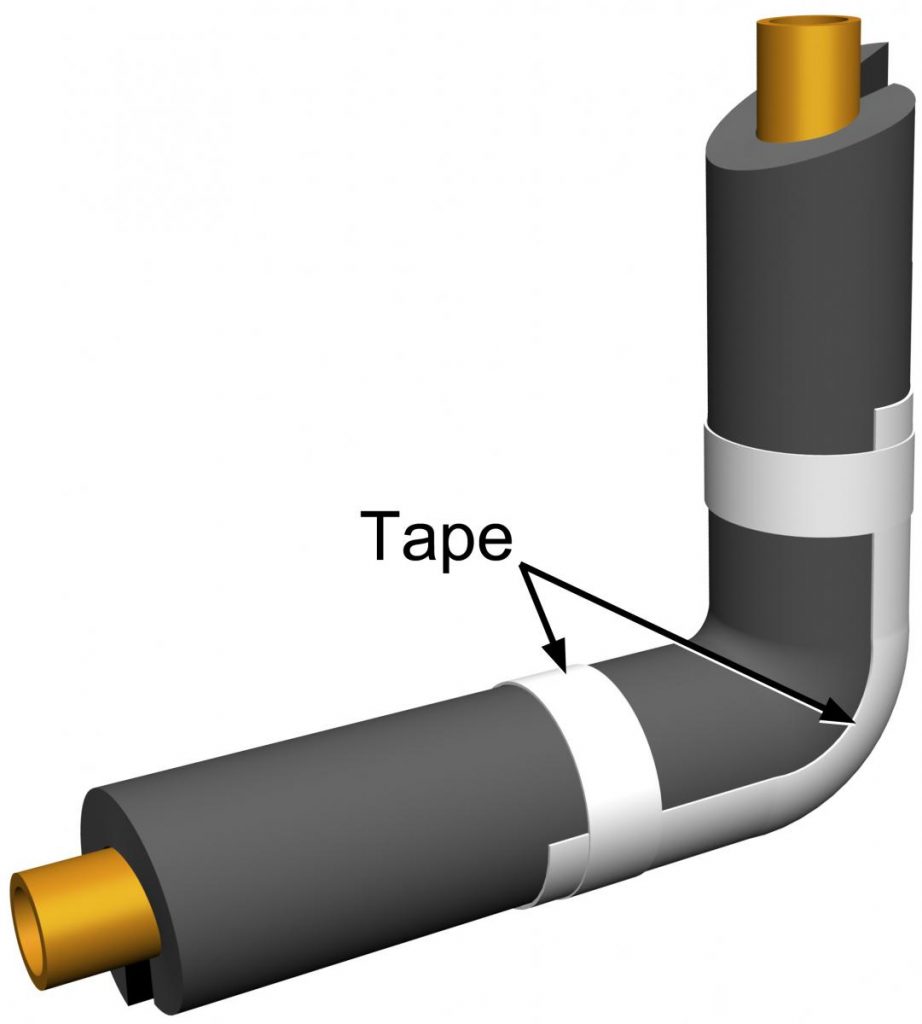
Almost everyone is familiar with the routine of wrapping exterior water pipes during cold weather – either in advance with the appropriate materials designed for such – or in the darkness with blankets or whatever is handy when the 6:00 news announces an overnight freeze warning.
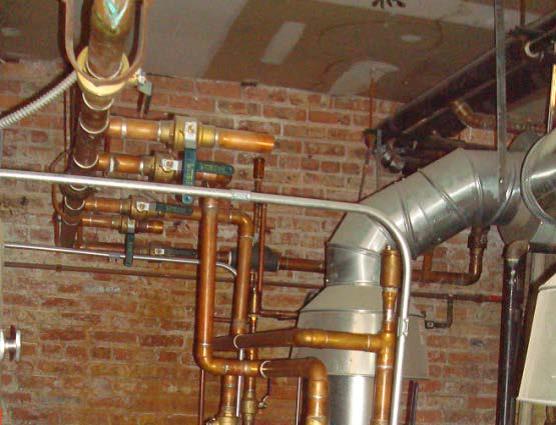
Advance planning is much more convenient and effective. Especially if proper insulation was used the previous year, it should be checked and replaced as needed.
Often overlooked are outdoor faucets, indoor plumbing in attics, basements, garages, or pool houses. Because those pipes and surfaces may be small and hard to reach, wrapping can be difficult, if not impossible. A couple of cans of spray-foam insulation will provide complete coverage and protection.
Here’s one DIY project wherein costs for high-quality materials is minimal, no expertise is required.
The savings in more efficient water heating may or may not be $100 per year. Preventing water damage to floors, walls and furniture can save 10’s of $1,000’s!
- Insulation
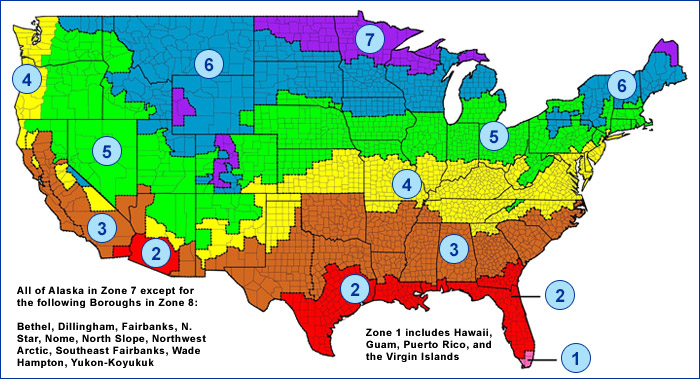
There is every probability that over the course of time, attic insulation in a given home no longer provides a complete blanket to an optimum degree.
Any wasted money on last month’s cooling can’t be recovered but heating expenses can be minimized, and comfort levels can be maximized easily and inexpensively. Rolls of paper-backed fiberglass (the “cottony” stuff) are easily handled and applied.
Focus on the specified “R Value” (resistance to heat transfer, in lay terms).
Depending on the potential extremes in temperature in a given locale, a minimum 10-12 R or up to 20+ can be achieved by adding layers of insulation.
Odds are that utility bills will noticeably, immediately and throughout the year drop. Certainly, $250 or $950 worth of insulation will lower utility bills many times over.
- Air leaks
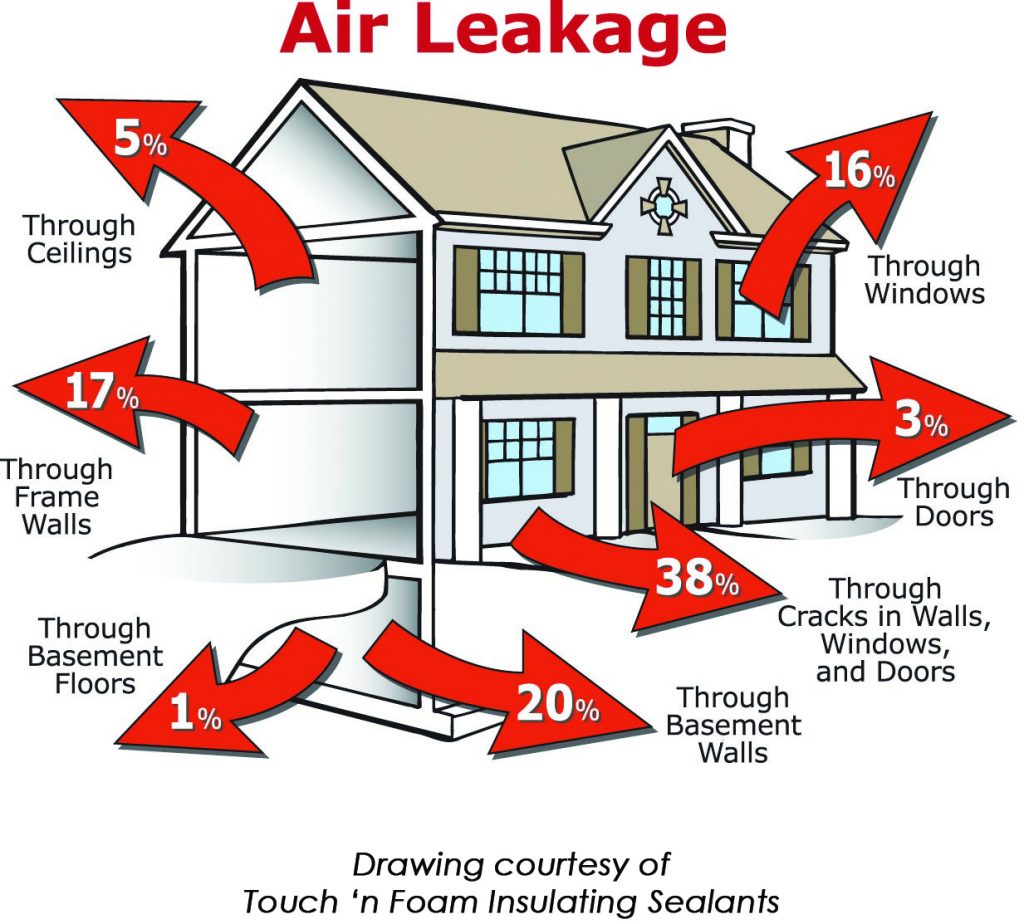
They are there, in every home. The challenge is to find as many of them as possible.
Doors (including the drop-down folding stair access to the attic) and windows are the most obvious sources. Check to see that all are plumb and show signs of warping.
Caulk and weather stripping are very inexpensive and, once the old material is removed, the surface cleaned in order to assure adhesion, the only skill required is patience.
Don’t forget the thresholds! For less than $75 – $150 “sweeps” or, better yet, a ¼” vertical plate against which the door can close will reduce the escape of conditioned air or invasion of the Great Outdoors.
Unnoticed breaches can also occur around wall penetrations for utilities, cable, or internet services.
Overall, according to several energy providers, air leaks represent 10% – 15% of the average home’s wasted energy expense.
- Pools & Hot Tubs
The wide variety of equipment manufacturers, designs, configurations, and construction techniques don’t allow for a “one size fits all” checklist here.
But whether this is your 1st winter with your pool / hot tub, or you’ve had several over the past decades with no problems, a little research and maybe a couple of $100’s are highly recommended investments.
The wide variety of what can go wrong, what the ultimate financial and legal damages could be, are too numerous to quantify. Expenses may not be directly recovered, but assets will be protected.
If you don’t have a regular local pool / spa service, don’t know who originally built the pool / hot tub or can’t find any manufacturer’s information on the equipment, then it’s time to find one, preferably all, of the above.
There is good news, however. In addition to internet resources specific to fresh water, salt water, infinity, above ground or manufactured alternatives, many local sources will have comprehensive brochures or manuals. For the most part, maintenance or preparation is not a challenge in knowing “how”, but “what” to do.
*** CAVEAT!!! There are, in fact, chemicals specifically formulated to retard freezing in swimming pools, goldfish ponds and spas. They are NOT the same as the highly toxic anti-freeze that is used in automobiles. Under NO circumstances should such ever be introduced into water that humans or animals can access.
- Landscaping
When 40-degree temperatures strike regions accustomed to the 70’s on New Year’s Day, native plants can be exposed to extreme stress at higher levels than hardy vegetation that thrives year-round in Green Bay.
If (when) a rare freeze hits, neighborhoods are blanketed with … well, blankets … and sheets, plastic or anything else that can be found to drape the shrubbery, young trees or flowers. As often as not, the exercise was pointless … other than the personal health benefits of the exercise.
In general, the temporary exposure to freezing temperatures of the moisture contained in leaves and woody branches is not necessarily life-threatening.
Maybe there’s some withering or apparent loss, but root systems are much larger, hold much more water and are the “organs” of the organisms.
Only extended and deep freezes routinely penetrate the ground or kill any but the most fragile of plant life, for which any tents are questionably effective and vulnerable to even moderate winds.
Now is the time to be introduced to and get to know your lawn. Different species will deal with colder temperatures in different ways.
Insufficient or too much hydration can be equally threatening.
Transplanting into pots for a temporary stay in the garage or other sheltered environment may be necessary.
Many plants may “appear” to have departed to the Great Nursery in the Sky but will come back as the weather warms.
On the other hand, from a safety, rather than esthetic, perspective all trees should be pruned of any limbs or branches that may fall victim to harsh temperatures or the deceptively great weight of accumulated ice and snow.
As well, any dangers to property or person that they present pale in comparison to those of an amateur with a chainsaw. If the limb is thicker than your arm, if it can’t be reached from the ground, “Call the guy.”
Depending on the locale and the extent of landscaping, “curb appeal” can easily represent $5,000 – $15,000.
Choosing the appropriate plant life, protecting it adequately and spending as much as $300 to $500 on preventive measures can be a sound investment with an ROI of 10-fold or more.
- Pets and wildlife
Finally, (although this subject should have been #1) use your superior intelligence and protect household and Mother Nature’s animals. Among 50 states, habitats and circumstances are diverse.
With best of intentions, many folks make a point of feeding birds in their back yards. Neighborhood cats, instinctive hunters, eagerly take advantage of these “baited fields”. Elevate bird feeders out of the reach.
During freezes, always make sure that there is an unfrozen, fresh water supply for those same birds, neighborhood cats, household pets and the opossums or raccoons that you never see but do reside in many of the wealthiest urban neighborhoods.
Limit and monitor the bathroom and exercise of indoor pets’ trips outside. They may be having a ball frolicking in the cold air and snow, but dramatic changes between outdoor temperatures and indoor environments, combined with increased body heat can lead to illness.
If you feel that you absolutely must allow your dog to live outside during the winter, then you MUST make sure that warm shelter and bedding – unexposed to the wind, rain, or snow – is maintained and checked frequently.
If you have an “outdoor cat”, or even if you don’t, all drivers in the family should make a habit of beeping the horn twice and waiting 15 seconds before starting any vehicle. Cats routinely find warmth and shelter underneath and around the engine compartment.
Now, get to work. Spring and Summer preparations are just around the corner! 😉
